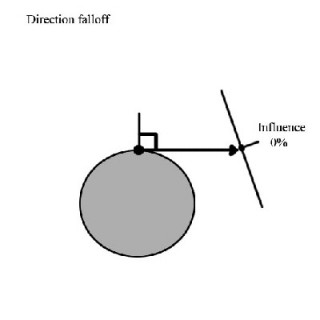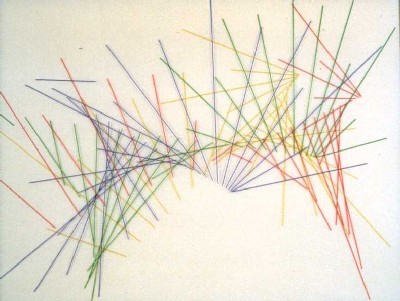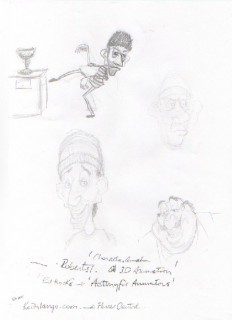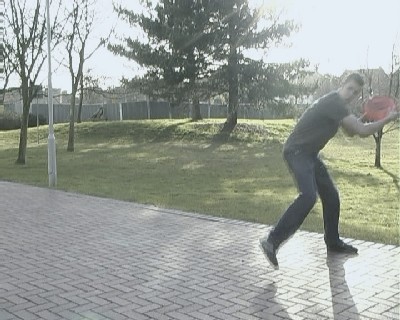Morphing of Different Topologies

The idea with this project is to investigate ways in which one could change the topology of an object in mid animation and morphing between two shapes with different pointcount and point connectivity.
Visualising Emotions within Computer Graphics

Computer Animation influences all areas of our every day life. Since the 1990?s commercial Speech recognition systems have been available off the shelf, but it has not been until the last few years that systems can now boast up to 99% accuracy (Dragon NaturallySpeaking? Pro V8 Program). This has greatly expanded the market of such systems and challenged companies to push the technology further. The majority of this extended research has been emotion recognition. This report will explore speech and emotion recognition and will look into methods of extracting basic meaningful data from sound files, with the use of Houdini, and expressing their content visually through colour and shape.
A Physically-based 35mm Stills Camera Simulation

Although there has been extensive rendering research into the simulation of real camera behaviour such as depth of field and motion blur, due to the increased render times these behaviours inherently bring, they are all simulated approximations.
Simulating Air Bubbles for Computer Generated fluids
Most of the available literature on fluid simulations has not included air bubbles. This paper presents a technique to add air bubbles to a pre-computed or dynamically calculated fluid simulation. Bubbles form naturally in splashing water so the omission of bubbles detracts from the believability and visual realism of a fluid simulation. In this paper I propose a particle-based system that can be implemented with any particlebased simulation of a fluid. The bubble particles are only created where needed and their movement is then dynamically simulated according to the flow of the fluid into which they are introduced.
Curve Controlled Deformations
Presenting a method using a curve guided deformation between two meshes with matching vertex count. This allows control over the intermediate positions of the vertices being deformed. Through this method it is also possible to gain
The making of Randomware
The idea began on a bus journey. I was playing a game called Warioware (Nintendo, 2003) on the Gameboy Advance. I’d already played each of the two hundred so-called microgames and completed the other modes. All that was left was to play the same microgames over again, competing against my own score. Since microgames are as simple as they are, I also had plenty of time to think about what I was doing. I realised that after exploring and unlocking every part of the game by now, it was no longer as fun as when I had first played it. The reason was because there were no surprises left to find which, when unlocked, each feels like a little reward for playing a new piece of game; the reward being a new challenge set and being new somehow recreates the exciting feeling of playing a game for the first time. (Well, you are playing that piece of game for the first time.) If only there was something left to unlock, although I would still be playing the same game, the possibility of a new discovery would give me more incentive, making the same experience more fun. If only there was more to unlock, if only it never ran out of freshness, then it would never run out of fun. It seemed a totally impossible idea, but it was so crazy that I thought it just might work. I was certain that, even if someone else had already thought of it before, in the modern state of the computer games industry, it’s an idea that sounds far too risky to even attempt, it’s an idea without proven success. Even so, it was an idea I became interested in trying out for myself, it contained the same excitement as playing Warioware did when I was trying to unlock a new level: the reward for taking the risk is the possibility of unlocking a brand new discovery.
A Documentation of the Modelling and Rigging Techniques Used to Create a Virtual Toy Transformer and the Possible Applications for it as a Marketing Tool
The objective that I set out to achieve for this project was to create an accurate replica of a toy Transformer robot using 3D computer modelling software and to build a working mechanical rig that would enable him to transform. This allowed me to explore the techniques used to model mechanical, robotic type characters and to understand and gain knowledge about the most apt methods for rigging them. On top of this, I decided to explore the possible uses and applications of my virtual toy model as a marketing tool for the toy company. My objectives provided me with a project that was to be both challenging and innovative. The practical side of this report is targeted at an audience who understand the concepts and terminology of 3D computer modelling and rigging in Alias Maya.
An exploration of the union of 2D animation with a 3D animated environment

To firstly formulate a comparative analysis of existing production disciplines and to investigate the techniques and methods used in both 2D and 3D productions. I will then back up this investigation by using these techniques for the creation of my own animated.
Innovations

For my innovations project, I decided to look at the issues surrounding image recolouring, including current techniques, their drawbacks, and possible solutions. I then wanted to try to implement a new image recolouring algorithm to attempt to address the limitations inherent in these current methods.
A Spectrally Based Method for the Emulation of the Technicolor Process on Digital Images

Before single strip multi-layered colour motion picture film was ‘developed’ at the end of the 1940’s, the main method of producing colour movies was a system invented by the Technicolor corporation, and hence commonly known as Technicolor. Other systems existed but the methods were essentially the same. Light from the lens was split into separate beams, each of which passed through a coloured filter onto a strip of black and white negative, so creating colour records that could be combined with filters and lights at projection time to recreate the scene in colour. The technique was characterised by a rich, vibrant colour that distinguished it from single strip colour films that eventually replaced it. After filming in Technicolor was discontinued, it was still common to create release prints from the colour film using the Technicolor printing process and recent films have also emulated the process on digitised film([2] & [3]). Digitally captured images lack the depth of film and new methods of mimicking photography are continually being thought up, grain, lens flare etc. This paper aims to develop a physically based method of emulating the Technicolor process on digital images through the use of spectral data.
